January is named after the Roman god Janus who is depicted with two faces; one looking back at the past and the other looking to the future, symbolising both the ending of some things and the welcoming of a new start.
On a personal level January brought the ending of one my daughter’s pregnancies and the new arrival of another granddaughter Annabelle. This little bundle of joy unfortunately had something of a tough start in the world, being rushed immediately into neonatal intensive care to be put upon a ventilator as she couldn’t breathe on her own, was dosed with antibiotics, had investigations for hole in the heart, was tube fed in an incubator connected up to a whole host of equipment keeping her alive and had to suffer a lumber puncture as part of investigations.
Mother Hannah also had her own issues being subject to transfusions, also dosed up with antibiotics, then heart and CT scans. You may therefore appreciate that looking after her other granddaughter and daily hospital visits this month have taken something of a priority over the building of our jet hydroplane Longbow. To coin a cringe worthy but true phrase as Vin Diesel / Dom from the Fast & Furious films would say ‘The most important thing in life is family’.
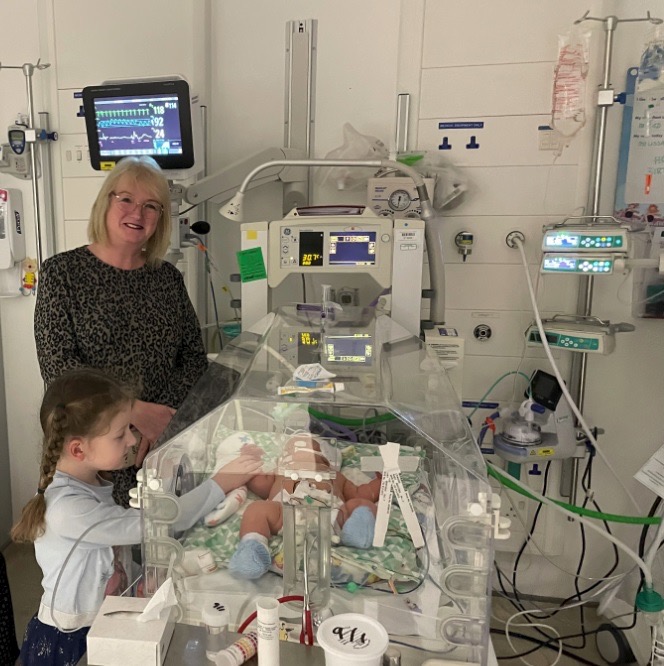
The good news is thanks to the superb care they received by the consultants and staff at the hospital, mother and baby are recovering well. They were able to be discharged with Annabelle still being tube fed initially from a tube that her parents had to learn to do. She is a little fighter though and getting stronger every day.
Back with a little normality and things speed record related, I promised my good friend Mick Day I would give his websites a plug as follows. Mick has a passion for both the car (Bluebird CN7) and boat (Bluebird K7) that Donald Campbell CBE obtained his world records with. To further this interest, some time ago Mick purchased a large model of Bluebird K7 and after a good deal of modifications to it by himself, he has managed to get it successfully up and running, complete with a fully working pure thrust gas turbine that sounds superb. Further details regarding the back story to this jet hydroplane model and Mick’s development of it may be found upon his website called not surprisingly: www.bluebirdk7.co.uk
Spurred on by this success with his model boat, Mick has recently embarked upon designing and building from scratch a large model of the Bluebird CN7 car. This too will have a fully working turbine engine that via gearboxes will drive all four wheels in order to mirror the full size Bluebird car that also had its wheels powered in a similar fashion. Mick is doing a fantastic job of the design and build of this model car using both traditional and state of the art modern model engineering. Similar to his model Bluebird boat website, Mick also has a dedicated website to this model car project that is well worth a look and following his monthly updates, aptly named: www.bluebirdcn7.com
Moving along to something of a somewhat larger scale it was nice to get back in my cottage workshop for the last few days of the month to work again upon Longbow once my daughter and granddaughter were allowed to leave the hospital.
Being mindful of the soaring cost of electric my eldest son Tom had kindly bought me one of those small twelve volt Chinese copy of a small diesel heater as a Christmas present to supplement the electric heating in the workshop. Although originally meant to heat vehicles such as campervans and boats, you can see online them being used to heat anything from a shed to a house and not surprisingly a friend of mine has one in their upholstery workshop.
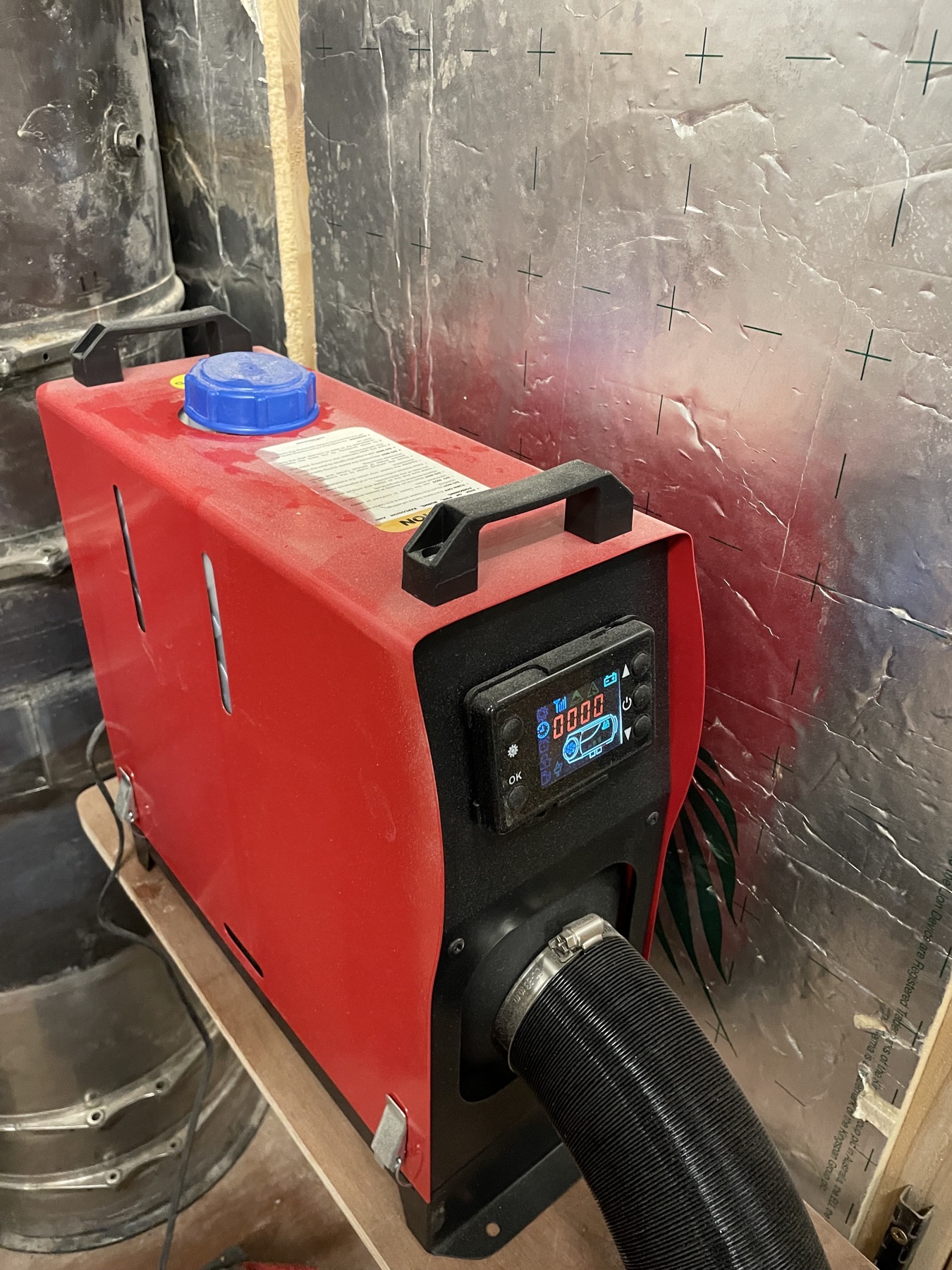
There is a huge amount of information online upon them with quite a following, with social media groups discussing various ways to install them, extracting the most heat from the exhaust system as it passes out the building, running them using alternative fuels ranging from kerosene to waste engine oil / cooking oil, etc, along with not surprisingly problem solving when some barely last longer than a few days after installation often as a result of diverging from simply installing them and running them as per the manufacturers instructions. One thing that is essential when using one of these things is a carbon monoxide detector to supplement the smoke and heat alarms already in there.
Being in the midst of winter here in the UK and the minimum temperatures required to set epoxy, that in itself was a good incentive to get this little heater installed in the workshop as a priority and I do have to say I was surprised how much heat they throw out for such a little unit. Running it simply from diesel from the local filling station the cost appears to be around half of what the electric heaters consume and no doubt running them on alternative fuels the cost per kilowatt hour could be reduced considerably from that.
In my case a single unit wouldn’t be sufficient for heating the entire workshop given its size so the electric meter is still buzzing away for the trusty oil filled radiators and infrared units when setting epoxy but it has certainly lessened the pain of heating the place when setting epoxy when there is a frost outside. My long suffering wife Gill says when not setting epoxy I can cope in there with jumpers, working harder and a mug of tea to stay warm as she looks on from the comfort of the cosy centrally heated cottage with the log fire blazing away in the lounge!
So with ample heat in the workshop I was finally able to start fitting the marine plywood outer layer to the top of the sponsons to Longbow. For the thickness of plywood being supplied from our sponsor Robbins Timber the curve it was required to bend to for this particular element of the build, I was mindful would be getting on for the limit of what was possible without doing it in thinner sections of lamination.
I do find it helpful prior to fixing the plywood in place with screws / epoxy, to gently tease the material down using a combination of our sponsor Sealey F clamps and scissor jacks, then leave it like that overnight in order to allow the fibres within the wood to become used to the shape they will later be permanently set in place to. It also allows you to see where any additional clamps / pressure to form the shape will be required. Once we were happy with everything we could then do the final fix with the marine grade screws from our sponsor Avon Stainless Steel Fasteners and the superb WEST SYSTEM EPOXY from our sponsor Wessex Resins.
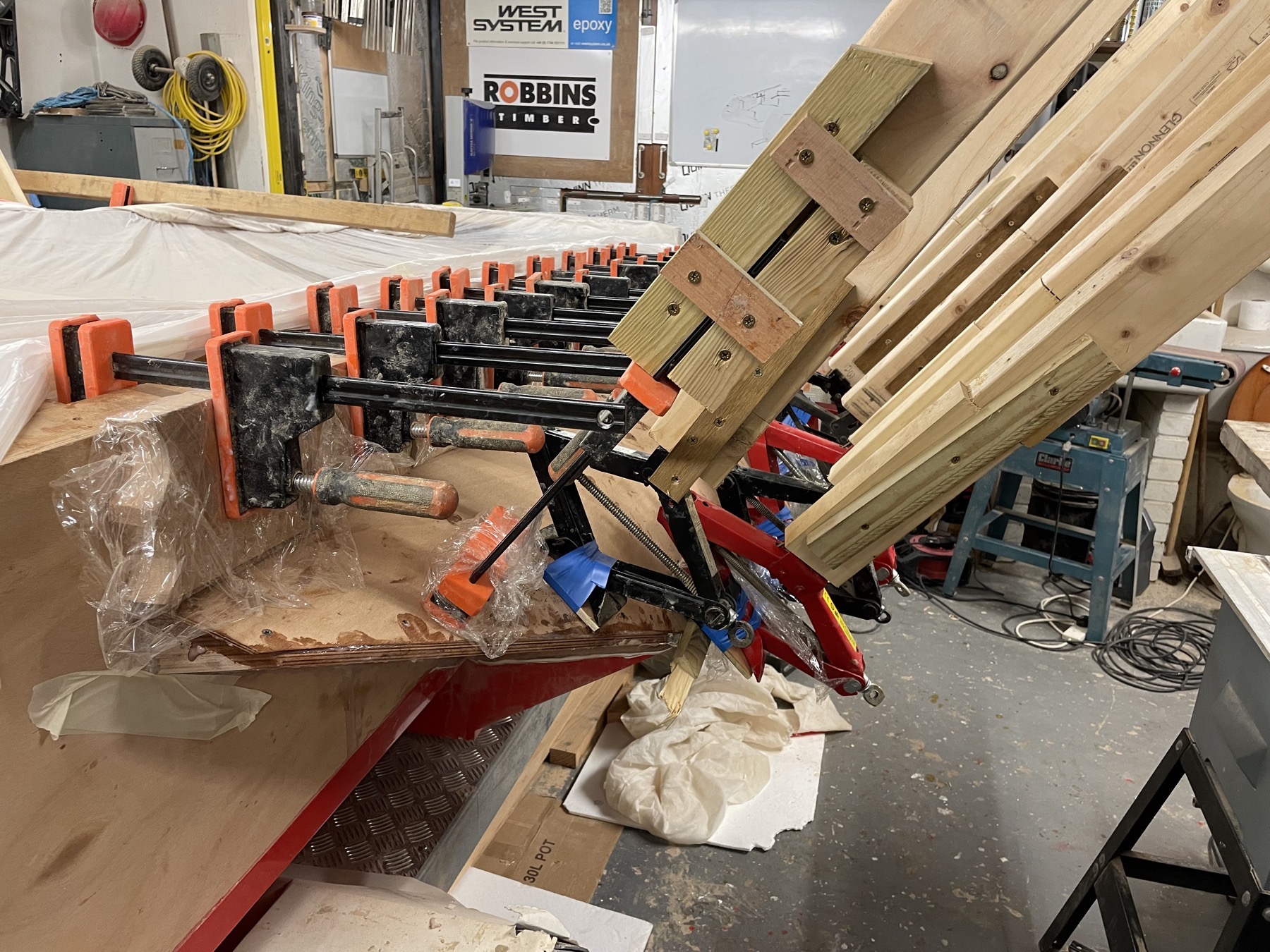
Once the epoxy had cured the clamps, scissor jacks and wooden packers could then be removed. I had previously wrapped the wooden packers in clingfilm to prevent them being inadvertently becoming a permanent fixture of the boat when they come into contact with the epoxy. When all of that was cleared away then screw fixing points were covered by epoxy and the area can then be cleaned down.
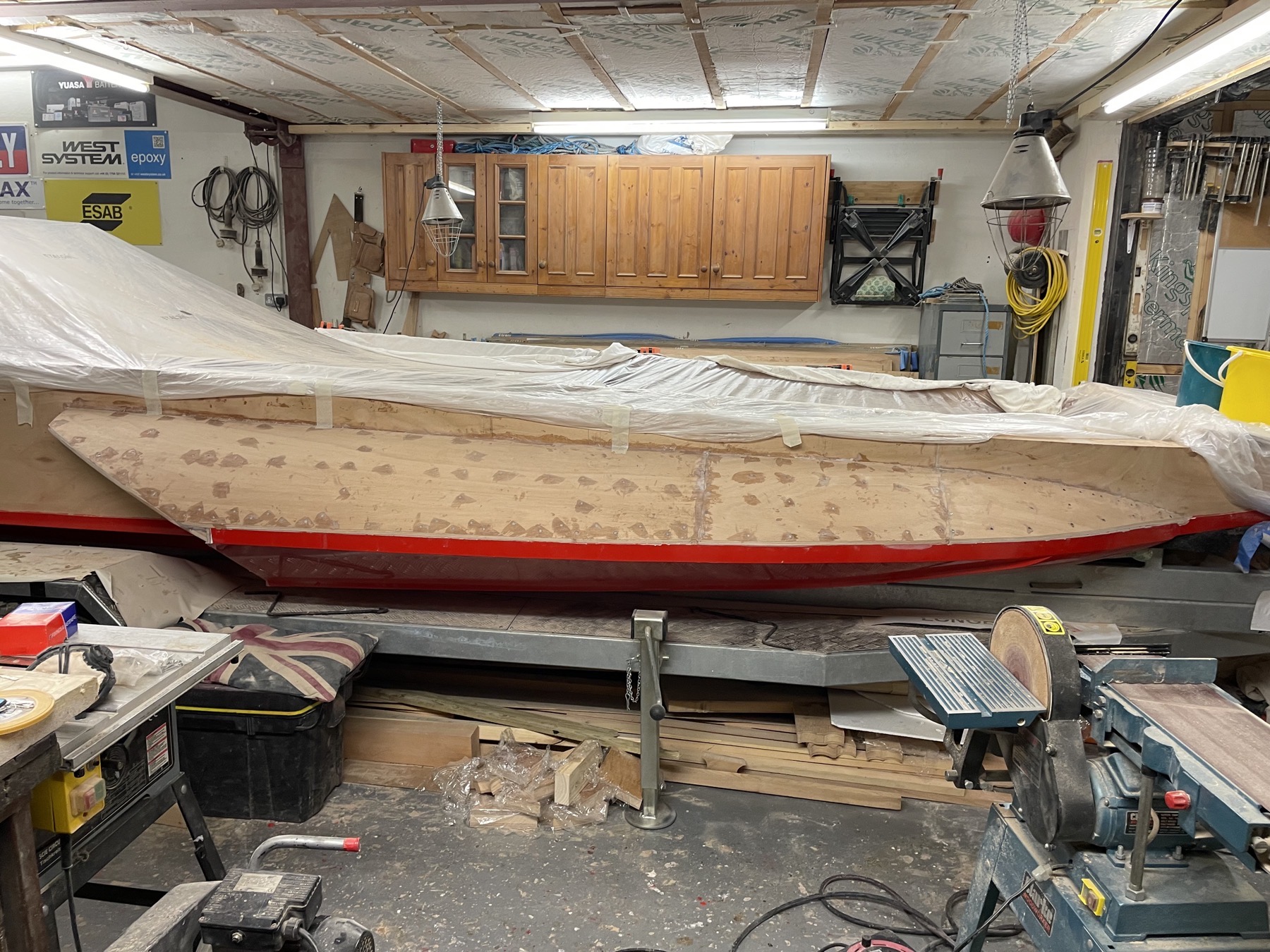
At time of writing the starboard sponson top is fully in place and just needs cleaning down whilst the port side where there is less room to work is partially in place.
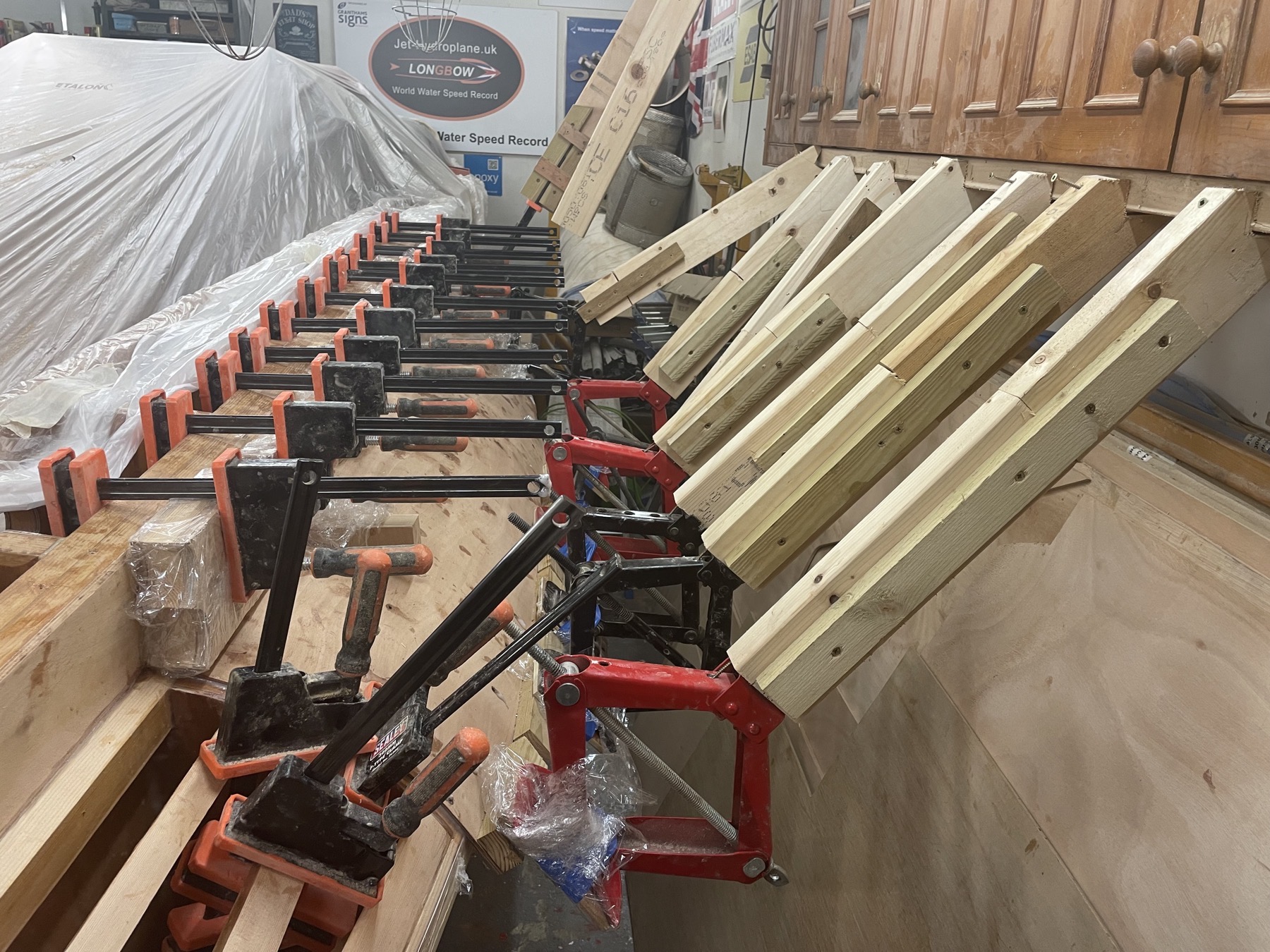
So that is all my news for this month folks and hopefully February will see less stress and drama that nobody needs in their life and at least the other sponson to Longbow will have its top fully in place by the time of our next update.
